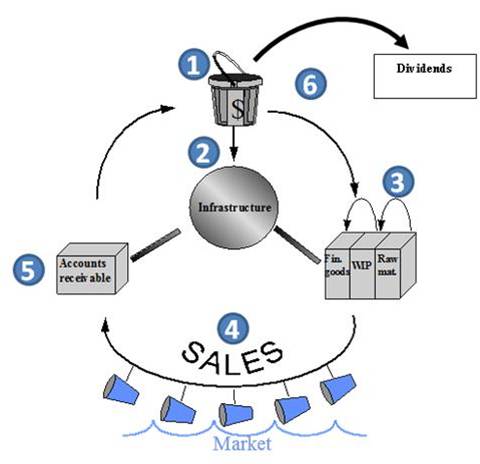 There’s no lack of theories about why our country is in the economic mess it’s in, but a very small situation I tried to deal with today tells me that one of the major factors that is holding us back from our potential is petty bureaucracy, with its ubiquitous stifling control of so many aspects of our lives.
There’s no lack of theories about why our country is in the economic mess it’s in, but a very small situation I tried to deal with today tells me that one of the major factors that is holding us back from our potential is petty bureaucracy, with its ubiquitous stifling control of so many aspects of our lives.
I live in a beachside city on the lower end of the East Coast. I don’t want to identify it directly because it’s heavily dependent on tourism and jealously guards it image. Let’s just say that Connie Francis once made a movie here and millions of people of my age cohort crashed in crowded, boozy hotel rooms here during Spring Break.
One of the nice perqs of being a resident is that for only $6 per year you can get a parking pass to park for free along some of the best beach parking. Besides saving a lot of money, it makes you feel like a VIP when you walk up to the parking meters and see some poor tourist fumbling with change and wrinkled dollar bills, and you just insert the card, punch in a few hours, and walk away.
The only problem is when you lose one, as I did when I went surfing a few weeks ago. I finally got around to calling them to see if I could get a replacement card, and they told me it was no problem. All I had to do was fill out a lost property report with the Police Department. I thought that was a little overkill, but I went to the PD web site, downloaded the appropriate form, filled it out, and drove about five miles to get them to stamp it with their official stamp. (I actually thought this was a bit onerous, because last month my wife had a $6,000 ring stolen and they just took the report over the phone.)
When I got to the police HQ, they told me I needed to have the form notarized. I said, “Really? For a $6 item?”, and looked closely at her face behind the bulletproof glass to see if maybe she was joking. It wasn’t a joke.
The parking office was nearby, so I went there to see if actually talking to someone and using my formidable powers of persuasion might work.
No such luck. The woman behind the (I assume also bulletproof) glass told me she did not realize it had to be notarized, but I did need the official PD stamp. I asked why, and she told me it’s because the cards contains thousands of dollars of value on them. Being a concerned taxpayer, I then asked if I reported it lost, could they cancel it and potentially save thousands of dollars? She told me no, there is no way to cancel the card. Being perhaps overly logical, I then asked if you can’t cancel the card anyway, what’s the purpose of requiring a lost property form?
Rather than answer the question directly, she expertly shifted the frame of the discussion and suggested I return to the police HQ and ask them to give me a form to fill out right there and she said I probably wouldn’t have to have it notarized if I got the form directly from them. I showed her the form I had filled out already and naively asked why their form would be different from the one I had downloaded; she told me that they only have the forms online so you could see what they look like, not actually to use.
That’s when I decided to cut my losses and return to work.
It’s such a small thing, but it took two hours out of my potentially productive workday and still was not resolved. And when you multiply that by the millions of hours wasted trying to comply with such pettifogging rules foisted on us by these petty tyrants with no accountability, is it any wonder that the US has slipped a spot this year in the global business climate rankings? is it any wonder people are so frustrated with our leadership? I almost think it doesn’t matter who is in the White House–it’s the public “servants” we deal with every day that really run our lives.
My problem now is this: I’m not a Tea Partier and I don’t want to occupy anything. Where do I turn?
My good friend John Spence just posted a video review of Bottom-Line Selling. John has an excellent book of his own, Awesomely Simple, and his blog is excellent reading for leadership, strategy, and general business excellence. Here’s the video. If I could just live up to half the nice things he says about me, I’d be pretty proud.
 Want to add meaningful and measurable value to your customers? Become a cash flow engineer.
Want to add meaningful and measurable value to your customers? Become a cash flow engineer.
We’ve been told for years that the best way to add long term value to customers is to be consultative or to sell solutions, and I don’t disagree—but it’s no longer enough. The problem is that these terms start becoming vague clichés—and since there is no commonly agreed definition anyone can claim to be a consultative salesperson. The result is that customer and prospects become jaded and easily dismiss any such claims.
Cash flow engineering: it’s a new term and a new approach which is different and concrete. It will allow you to get your buyer’s attention—and deliver on that promise.
Why is cash flow so important to your customers?
A simple yet powerful model for understanding your customer’s business is to see it as a huge engine for generating cash. Cash is the central ingredient of any business operation—it is the enabler and the ultimate objective of all business activity. Every business uses cash to generate more cash.
Although management pundits may disagree, investors know the truth: a company’s principal mission in life is to generate cash for its owners. That’s why visionaries invent and investors invest. Only through generating cash will the company be able to dole out dividends to investors, pay salaries, or grow the business.
In effect, the entire infrastructure of the business, the legions of employees, the business processes, and all that the enterprise comprises is a vast cash generating engine. In order to understand how the business functions, you must be able to trace the cash flows through the engine.
Most importantly, the business decision-makers you sell to pay close attention to it. The key, therefore, to improving the business is to understand how the engine operates, and what it needs to run strong, lean and fast.
Think of yourself as a cash flow engineer for a temperamental race car. Keeping the engine running is important, but you are also constantly searching for ways to squeeze better performance out of it to put the drivers in the best position to win. If you understand how their engine works and suggest concrete improvements that improve the engine, then you are adding real measurable value
Your customer’s cash flow engine
Let’s see how the engine works:

1. Assume that the firm has just been formed. For the moment, its only asset is a great big “bucket” of cash.
2. The only problem with this bucket is that it leaks. Cash is being rapidly sucked out of the bucket by a part of the engine called infrastructure comprising such things as machines, office buildings and equipment, and administrative staff.
3. In order to refill the bucket, you will buy or produce inventory for sale to the market. This is not a trivial process. Yu must acquire raw materials, process it to create finished goods, store it, keep track of it, etc. Every one of the processes takes cash and time, and every dollar that remains in one of these piles is one that is not being cycled through to generate more cash.
4. Next, the inventory must be sold. Unless it is a busy retail operation, this also takes time. As you well know, complex systems sales can have a frustratingly long sales cycle.
5. Once the goods are delivered, the company must still wait for customers to pay. Often, just compiling the information to prepare a proper bill takes time, as does the printing and mailing. Until then all they have to show for their efforts is accounts receivable, which you can’t spend at the grocery store.
6. At last, the cash begins to flow back in to the bucket. Even though you had to leave a lot along the way, in the form of inventory reserves and unpaid receivables, the cash flow engine is beginning to do its job. Cash flows back into the bucket and can then be reinvested into the cycle to generate yet more cash, or to pay dividends. Note that I did not use the word “profit”; profit is not real, it’s only an accounting convention. Cash is real—you either have it or you don’t.
5 ways to engineer more cash flow
Every time the engine turns over, it generates cash. Cash flow improvements come from making the engine more powerful, leaner, or faster. When you look at it this way, you will see that there are five main ways to generate measurable cash flow impact.[1]
More powerful:
- Make the engine bigger: Increase the volume running through it by increasing production or making their products more attractive.
- Increase the size of the buckets: Increase the gross profit margin.
Leaner:
- Reduce the amount taken out: Lower costs.
- Reduce the amount needed to run it: Improve asset efficiency.
Faster:
- Make the engine run faster: Speed up parts or the entire cycle.
Seeing your customer’s business operations this way expands the range of possible improvements beyond saving money and increasing revenues; this allows you to connect with a broader variety of “problem owners” and speak in the terms that they care about. Of course, every engine is different and it takes time and effort to know enough about each one to make a real difference.
Sales pitch for my book
Here’s where I drop the other shoe. This article has had to vastly simplify the idea of the cash flow engine, and of course the devil is in the details. If you want to improve your own cash flow engine, you can learn the details in the new revised and expanded edition of my book, Bottom-Line Selling: The Sales Professional’s Guide to Improving Customer Profits. Or, if you want to try before you buy, you can get a free copy of Chapter 7, which explains the cash flow engine in detail, here.
[1] There are other important benefits you can bring to your customers besides these, of course, but they are much less tangible.
 When I was in high school, for some reason CB radio chatter became trendy. Urban middle class kids suddenly thought it was cool to talk like a blue-collar trucker, and began using jargon like 10-4, and “What’s your 20?” and “Put the hammer down”. But they really just sounded stupid, because jargon that does not fit both the sender and the receiver at the same time is useless and even harmful. On the other hand, it can be very effective if used properly.
When I was in high school, for some reason CB radio chatter became trendy. Urban middle class kids suddenly thought it was cool to talk like a blue-collar trucker, and began using jargon like 10-4, and “What’s your 20?” and “Put the hammer down”. But they really just sounded stupid, because jargon that does not fit both the sender and the receiver at the same time is useless and even harmful. On the other hand, it can be very effective if used properly.
You hear it all the time in presentations. It may be technical jargon, or cultural or even company-specific. Usually speakers use excessive jargon for different reasons than the kids used to use CB jargon—rather than using it self-consciously they are unaware that they are using it, because they and those around them use it all the time. The result is a presentation that is not fully understood by the listeners, who are often too polite, too indifferent or too intimidated to say anything. So they just tune out. A useful antidote is to give the presentation to a friend or a family member who is not familiar with the terms you use at work all the time.
Jargon gets a bad reputation because it usually only becomes noticeable when it leads to miscommunication, but it can actually be a very efficient and credible form of communication.


